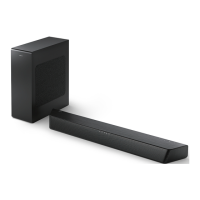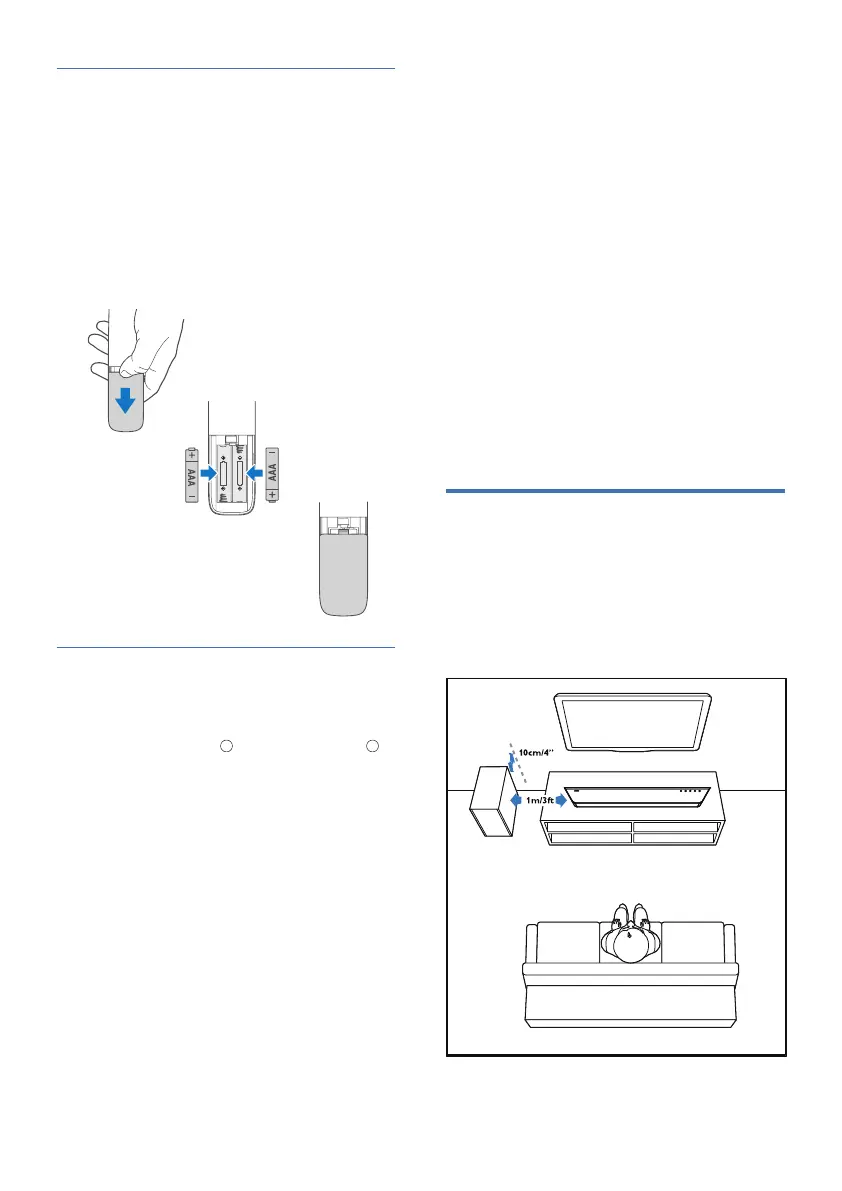
 Loading...
Loading...
Do you have a question about the Philips TAB7207 and is the answer not in the manual?
| Subwoofer type | Active subwoofer |
|---|---|
| Subwoofer included | Yes |
| Subwoofer connectivity | Wireless |
| Subwoofer frequency range | 35 - 150 Hz |
| Audio decoders | Dolby Digital, Dolby Digital Plus |
| RMS rated power | 520 W |
| Audio output channels | 2.1 channels |
| Number of tweeter drivers | 2 |
| Total Harmonic Distortion (THD) | 10 % |
| Bluetooth profiles | A2DP, AVRCP |
| Soundbar impedance | 8 Ω |
| Soundbar frequency range | 150 - 20000 Hz |
| Wi-Fi | No |
| Bluetooth version | 5.0 |
| Connectivity technology | Wired & Wireless |
| EasyLink | HDMI-CEC |
| Width (cm) outer carton | 62 cm |
| Height (cm) outer carton | 21 cm |
| Length (cm) outer carton | 105 cm |
| Tare weight outer carton | 4.282 kg |
| Net weight of outer carton | 14.278 kg |
| Gross weight of outer carton | 18.56 kg |
| Product color | Black |
| Audio formats supported | FLAC, LPCM, MP3, SBC, WAV |
| Cables included | AC |
| Number of products included | 1 pc(s) |
| AC input voltage | 100 - 240 V |
| AC input frequency | 50 - 60 Hz |
| Power consumption (standby) | 0.5 W |
| Package depth | 970 mm |
| Package width | 460 mm |
| Package height | 185 mm |
| Package weight | 8640 g |
| Depth | 106 mm |
|---|---|
| Width | 800 mm |
| Height | 65 mm |
| Soundbar weight | 2100 g |
| Subwoofer depth | 300 mm |
| Subwoofer width | 150 mm |
| Subwoofer height | 400 mm |
| Subwoofer weight | 4740 g |
Covers critical safety warnings regarding electric shock, fire, injury, and proper usage environments.
Lists all items included in the soundbar package for verification.
Connecting the soundbar to a TV via HDMI ARC for audio return.
How to connect the soundbar and subwoofer to the mains power.
Methods for establishing a wireless connection between the soundbar and subwoofer.
Turning the soundbar on/off and understanding auto standby functionality.
Switching between different audio sources like HDMI, Optical, AUX, and Bluetooth.
Adjusting the overall sound level for the soundbar and subwoofer.
Connecting and streaming audio from smartphones, tablets, and other Bluetooth devices.
Playing audio files stored on USB drives or media players.
Troubleshooting common problems related to the soundbar's buttons and power.
Solutions for issues like no sound, distorted audio, or subwoofer connectivity.
Steps to fix problems when a device cannot connect via Bluetooth.